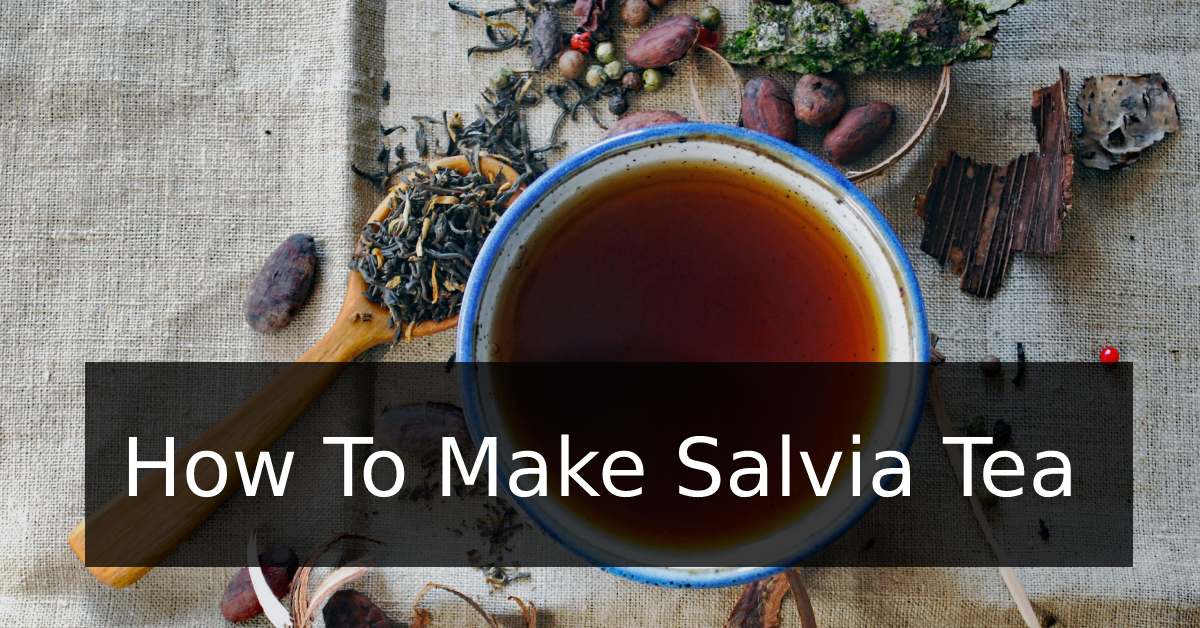All you need to know about making Salvia Divinorum Tea.
In the last decade, mainstream attention towards salvia divinorum has increased tremendously. Salvia divinorum has become something that a lot of people are wanting to try out. The most popular way of trying salvia is to smoke it. However, some people dislike smoking it, so making it into tea is a great alternative to trying salvia without smoking it.
Salvia (also called sage) is a natural plant that has recently garnered a lot of attention. Belonging to the mint family of plants, this plant has many species and variants. Salvia leaves belong to an incredibly diverse herb family, one of them being Salvia divinorum. Salvia divinorum is the only variant of salvia that will give you psychoactive properties.
Salvia divinorum can be chewed raw, made into a tea, or the extract smoked to gain hallucinations effects.
Some people understandably don’t want to smoke the Salvia extracts due to the obvious drawbacks that come with smoking. If you are someone who does not want to smoke the Salvia extracts but still want to try it out – an alternative that you can opt for is Salvia Tea. Salvia has been used for thousands of years by Mazatec shamanic. Since ancient times, people have employed the tea brewed from these leaves for Salvia’s associated effects.
Salvia tea is a brilliant substitute for smoking the Salvia extracts. If you are interested in Salvia but do not want to smoke it, keep reading to know how you can brew yourself a great cup of Salvia tea.
Where does Salvia originate from?
The Salvia plant (or Sage plant) belongs to the mint family and typically grows in humid and temperate regions. Salvia divinorum originates in the Mexico region of the world. Salvia Divinorum is one of the rarest variants of Salvia and is native to the Sierra Mazateca in Oaxaca, Mexico. Infact, this variant will only grow in that region.
There are some things you need to know about Salvia before you jump on the bandwagon. That is where we come in. Rather than getting misinformation from the internet, this article has the step-by-step you need to follow to brew yourself a fantastic cup of Sage tea.
What will you need to brew a basic Salvia tea?
In order to brew a simple cup of Salvia tea, there is not an extensive list of ingredients you need. The process of brewing is also a hassle-free and easy process. What you need to brew a great cup of Salvia tea includes:
- A tablespoon of dried and crushed Salvia leaves or a couple of twigs of fresh sage.
- A cup of water.
- A teaspoon of honey.
- Half a teaspoon of lemon juice.
The ingredients required to brew a simple cup of Salvia tea are readily available in every kitchen apart from the Salvia leaves.
How to make a basic Salvia tea?
The following simple steps need to be followed to make a honey and lemon-flavored Salvia tea:
- Warm a cup of water either in a pot over the stove or use your kettle. Make sure that the water is boiling before you proceed to the next step. If you are using a kettle to warm your water, add the water to a pot and proceed.
- Add your Salvia leaves in the boiling water and cook over low heat for a couple of minutes with constant stirring.
- Strain this tea into a cup and add your honey into it as a sweetener. Squeeze the lemon juice on top and stir your cup.
- Your tea is ready for drinking. Add more honey or lemon-based on what you like.
Its important to note that Salvia tea cannot be brewed using extracts and need fresh whole or dried/crushed leaves.
How to elevate a simple cup of Salvia tea?
You can also turn your fantastic cup of hot Salvia tea into a refreshing iced tea as well. Simply brew the tea in the same way as you would when making a hot cup of it. Then allow it to cool and pour it into a cup with several ice cubes.
This alternative is great for the summers and also for people who do not prefer hot or warm drinks.
There are other ways of elevating a simple cup of Salvia tea. You can add berry flavors and extracts along with Rosemary and Lemon extracts to give it a more robust fruity flavor. Some people also add a small amount of grape juice to their iced Salvia tea to get a fresher taste. The minty hit of Salvia leaves is exceptionally tasty when brewed into an icy glass of tea.
Is Salvia Tea the best way of trying Salvia?
Salvia leaves are a versatile gift of nature. They can be smoked, chewed upon, brewed into teas, or pressed into extracts. Every form of using Salvia has its pros and cons. People who tend to opt for Salvia teas do so because they do not want to go through the hassle of smoking the leaves.
It’s important to mention that the effects that come from Salvia tea are much mellower and balanced as compared to the more potent effects you get with Salvia extracts.
If you are looking for higher potency and a stronger effect, you should opt for extracts instead of teas. Customers looking for an alternative to smoking Salvia can opt for tea as long as they are fine with a mellower effect.
Are there any precautions I need to take?
Although it is rare, some people have an allergic reaction to Salvia or Sage. For this purpose, it is crucial to figure out whether you are one of them. Furthermore, if you have a history of allergies to plant-related products, it is advisable to consult a doctor before trying out Salvia in any form.
Moreover, it is advisable to consult with a doctor before taking Salvia tea if you are on previous medication. Pregnant women should avoid Salvia unless they have consulted an experienced doctor.
In conclusion, Salvia teas are the most accessible way of giving Salvia a try as some people finds smoking to be unappealing. Salvia tea also allows you to take advantage of the plant’s associated benefits without having to smoke it. Furthermore, the process is hassle-free and quick, and even a novice in the kitchen can prepare the tea.



